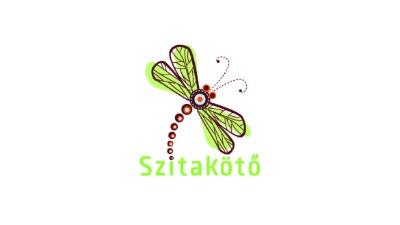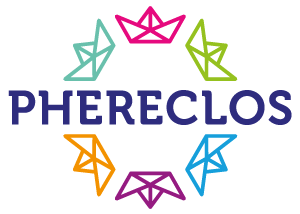Dragonfly educational programme
- Hungary,nationwide + Hungarian-speaking schools in Romania, Serbia and Slovakia
- 2008

| Time frame | |
| Categories | |
| Level of Schools | |
| External Partners | |
| Type of Schools | |
| URL | |
| Number of Schools involved | |
| Number of Schoolheads involved | |
| Number of Teachers involved | |
| Number of Students involved | |
| Number of Parents involved | |
| Number of External Partners involved |
The aim of the program is to give practical help to teachers and to start a theoretical and methodological change in elementary ecological education by combining science and arts. Although some private schools have started integrating alternative methodology, teachers working in average Hungarian elementary schools are totally unqualified in this respect and have no access to such materials in Hungarian – especially not for free. While ecological thinking is claimed to be the key element of our sustainable future, even the most important aspects are not mentioned during teacher training.
Dragonfly magazine is unique not only because it is exquisitely designed and contains well-written, funny and interesting contemporary poems, tales and articles that accommodate the special needs of elementary school children, but due to its complexity in content and purpose. It is outstanding, because it combines the advantages of a colourful magazine with the educational materials of a schoolbook. The use of the magazine is supported by the website that contains over 6000 auxiliary materials that are connected to the writings of the magazine. regular teacher training sessions and interactive workshops for children and parents are organized in each school every year.
We apply for various grants, do crowd funding and also sell the magazines to individuals and libraries to fund the educational programme that is free for schools.
The programme has been continuously running for 12 years despite severe cuts in its government funding. 51 issues of the magazine has been published. The schools send reports every three months about the everyday use of the magazine and it shows that over 800 teachers and 8000 students use it continuously. It is available in 400 public libraries and has been often used in teacher trainings and national entrance exams of secondary schools. Over 800 teacher training sessions and interactive workshops have been organized successfully as part of the programme. Over 6000 auxiliary materials are available on the website. The programme also has an accredited 30-hour-long teacher training that has been organized four times so far. A continuously growing number of materials are also available in audio format.
This unique, high-quality magazine and educational program has been highly appreciated by Hungarian and international educational organizations. Teachers, students and parents have sent thousands of letters expressing their gratitude and admiration. The program pays special attention to socially disadvantaged children and children suffering from mental or learning disorders.
It combines art-based education with environmental education, but the environment is understood in a wider sense to include the urban and spiritual environment, as well. Thus, social issues and equity are frequently mentioned.
Each issue of the magazine deals with a new topic and the innovation is to look at that given topic from various aspects, using both artistic and scientific approaches.
Several auxiliary materials are developed that are connected to the writings in the magazine. These materials are all freely downloadable from the website.
Partner organizations are encouraged to make use of the magazine and the downloadable materials and to propose further co-operation. Several NGOs ask for advice and help to build networks with schools and thus become involved in the design of the programme.
Teachers are encouraged to include practices that are based on mutual learning, e.g. co-operative learning techniques, involvement of family members in research, engagement of parents/caregivers in cultural programmes.
Several issues of the magazine discussed social inclusion with regard to refugees, socially and physically disadvantaged people, the Roma, gender roles. A growing series of audio materials are available for the visually impaired and for students who struggle with reading.
As the magazine often deals with ethical questions regarding both contemporary and historical issues, several auxiliary materials have been developed that are frequently used in Ethics classes.
One of the most important aims of the porgramme is to show teachers how to involve interdisciplinary methodology (e.g. by using a painting or a poem to teach Maths, or reading an exciting scientific article to develop reading skills.
The articles in the magazine often encourage the students to dig deeper and search for further information on the net or in books to answer various questions. The website has a weekly quiz game that encourages students to develop their IT skills. Each issue contains a creative tender where students can apply various art skills, research and win prizes.
The editors of the magazine work closely with the authors, illustrators, designers of the magazine and the teachers when deciding on the new topics of the magazine, developing its content and the auxiliary materials. The teachers give feedback every three months and specify their needs which are taken into consideration.
The articles in the magazine often encourage students to do local research or to take specific local action e.g. for the preservation of local environmental values.
Ten base schools have been chosen where ten mentor teachers are frequently included in writing various projects for the programme. They receive special training materials and training opportunities. They also organize their own trainings for their colleagues every three months and can act pro-actively locally, organizing presentations, competitions, exhibitions, project days to promote the programme.
Teachers receive trainings and training materials to help them with the everyday use of the magazine. The mentor teachers provide further trainings in the ten base schools.
Students are often encouraged to do research on the internet, to answer the weekly quiz questions on the website. Several auxiliary materials include the development of digital skills.
Decisions are made by the project team based on frequent email communication between the team and the teachers. The teachers collect the opinions of the students and parents and forward it to the team.
We usually co-operate with a suitable partner in each issue of the magazine. Students can participate in various creative tenders individually, in smaller groups or as a class, and the partners provide the rewards (e. g. admission tickets to museums, theatres, adventure park, circus or various objects, e.g. table games, books, etc.).
The programme includes 42 schools and co-operates with various institutions. Several of the magazine authors are involved in higher education.
The project team consists of an editor-in-chief, an editor, a reader, a scientific lector, an educational expert, two designers, a web programmer and an assistant.
All schools must send feedback every three months, the reports are evaluated, the project team discusses the various specific needs and suggestions.
